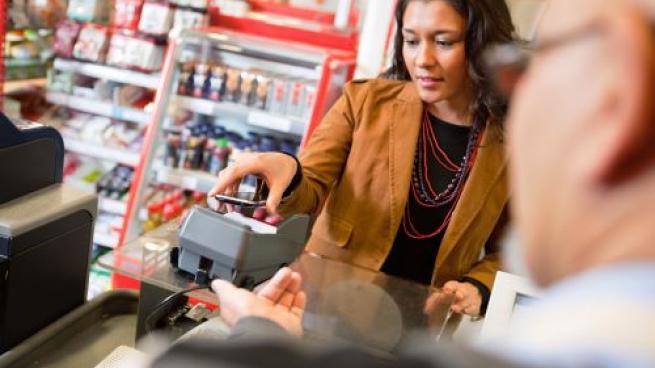
What QR Codes Tell Us
One of the more interesting payment stories to emerge from the pandemic is the rise of QR codes. Launched in 1994, QR codes have never taken off dramatically. However, the past few months have brought renewed optimism about the technology’s use in food retailing.
That’s because QR codes can carry a lot of weight in the larger grocery transaction space. As ModStac’s Potharaju explains, that technology — relatively cheap to deploy, and easy to use by pretty much any consumer with a smartphone — can speed up online transactions by pushing shoppers to an online product page, enabling them to read online reviews or allowing them to build a virtual shopping cart by scanning QR codes. Additionally, use of these codes not only provides granular consumer data to food retailers, but also fuel marketing engagement and even coupon delivery.
“Grocery coupon clipping is the oldest tradition in customer engagement and loyalty, and today we’re seeing the couponing experience shift to mobile, and more coupon engagement being driven by QR code integration,” notes Potharaju. “QR codes nudge shoppers from the physical store onto your digital platforms, where you can more easily understand peoples’ shopping behavior, wants and needs. That creates an opportunity for continued engagement, where grocers learn more about customers and prospects, and can build increasingly sophisticated ways of targeting them.”
The Bigger Payments Picture
None of this is meant to suggest that QR codes will be a main driver of digital payment change in food retail in 2021. Rather, this serves as an example not only of how smaller parts make up the wider digital transaction experience — simply deploying a new payment option is hardly the only job for grocers — but also how those smaller parts can, in turn, serve to deepen the retail ecosystem.
Other considerations are important, too.
“It’s also key to remain vigilant against card-not-present payment fraud, including counterfeit and account takeover,” advises Maureen Elworthy, head of multi-industries wholesale payments for grocery and digital payments at New York-based J.P. Morgan, in a recent blog interview.
That may sound obvious, but the growth of grocery e-commerce is providing new opportunities for criminals intent on figuring out vulnerabilities of speedier, more digital transaction systems. Guarding against fraud is a never-ending battle, but food retailers are likely to experience new forms of it — or forms of online fraud already recently experienced by other merchants.
Grocers also need to engage in strategic planning before devoting themselves to new digital payment systems.
“Grocers need to create an e-commerce platform that can easily adapt to change through APIs [application programming interfaces] and cloud-based architecture,” counsels Elworthy. More abstractly, food retailers need to own “their own digital sales channels and [think] of things like mobile apps as core to their business success. There’s also a need to optimize card-not-present payment performance, from approval rates to managing transaction costs to fraud exposure.”
Digital payment opportunities and challenges will continue after the pandemic, Elworthy points out. Among those opportunities and challenges are “optimizing branded online and mobile sales channels to attract, grow and protect revenue and customer loyalty,” she says. “It’s important to create frictionless digital payment experiences by mirroring card-on-file, subscription-type business models.”
"payment" - Google News
March 22, 2021 at 06:12AM
https://ift.tt/3lJFoeT
Keeping Pace With Increased Digital Payment Options - Progressive Grocer
"payment" - Google News
https://ift.tt/3bV4HFe
https://ift.tt/2VYfp89
Bagikan Berita Ini














0 Response to "Keeping Pace With Increased Digital Payment Options - Progressive Grocer"
Post a Comment